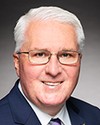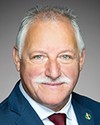I call this meeting to order.
Welcome to meeting number two of the House of Commons Standing Committee on Veterans Affairs. Pursuant to Standing Order 108(2) and the motion adopted by the committee just moments ago, the committee is commencing its study of the backlog of disability benefit claims at the Department of Veterans Affairs.
Today's meeting is taking place in a hybrid format pursuant to the House order of September 23, 2020. The proceedings will be made available via the House of Commons website. The webcast will always show the person speaking rather than the entirety of the committee.
To ensure an orderly meeting, I would like to outline a few rules to follow.
Members and witnesses may speak in the official language of their choice. Interpretation services are available for this meeting. You have the choice at the bottom of your screen of either “Floor”, “English” or “French”.
To the members participating in person: proceed as you usually would when the whole committee is meeting in person in a committee room. Keep in mind the directives from the Board of Internal Economy regarding masking and health protocols. I don't think we have anybody in the room today.
Before speaking, please wait until I recognize you by name. If you are on the video conference, please click the microphone icon to unmute yourself.
I will give a reminder that all comments by members and witnesses should be addressed through the chair. When you are not speaking, your mike should be on mute.
With regard to the speaking list, the committee clerk and I will do the best we can to maintain that, but if you do wish to put up your hand, please do so. Through the Zoom channel, we will keep an eye on that as well.
Now it's my pleasure to welcome back the witnesses to this committee. We have General (Retired) Walter Natynczyk, deputy minister at Veterans Affairs Canada, and Steven Harris, assistant deputy minister at Veterans Affairs Canada for service delivery.
Witnesses, you will have five minutes for your opening remarks, and then we will get right into questions. The first questioner we have is MP Brassard.
General, the next five minutes are all yours, sir.











